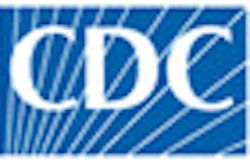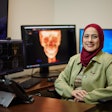
Millions of Americans are not receiving needed dental care services because of "persistent and systemic" barriers that limit their access to oral healthcare, according to a new report by the Institute of Medicine (IOM) and National Research Council.
This is the second report from an IOM committee addressing growing oral health and access-to care issues in the U.S. in the wake of the economic recession and subsequent cuts in Medicaid dental benefits across the U.S. The reports were issued in response to a request from Health Resources and Services Administration, which asked the IOM to assess the current oral healthcare system and recommend strategic actions for the U.S. Department of Health and Human Services.
The first report, "Advancing Oral Health in America," was compiled by the IOM's Committee on an Oral Health Initiative and released in April 2011. The report emphasized the link between a person's oral health and overall health, and included several recommendations for improving oral healthcare in the U.S.
— Institute of Medicine
This latest report, the 234-page "Improving Access to Oral Health Care for Vulnerable and Underserved Populations," was written by the Committee on Oral Health Access to Services. The committee comprised 15 members with expertise in dentistry and dental hygiene, dental public health, pediatric dentistry, pediatrics, family medicine, obstetrics/gynecology, health law, health policy, nursing, prenatal care, neonatal and infant health, public health, health disparities, and health finance.
"The consequences of insufficient access to oral healthcare and resultant poor oral health -- at both the individual and population levels -- are far-reaching," said Frederick Rivara, MD, MPH, the holder of the Seattle Children's Guild Endowed Chair in Pediatrics at the University of Washington School of Medicine and chairman of the committee. "As the nation struggles to address the larger systemic issues of access to healthcare, we need to ensure that oral health is recognized as a basic component of overall health."
This means removing barriers that disproportionately affect children, seniors, minorities, and other vulnerable populations by taking the following actions:
- Changing funding and reimbursement for dental care
- Expanding the oral health workforce by training doctors, nurses, and other nondental professionals to recognize risk for oral diseases
- Revamping regulatory, educational, and administrative practices
Economic, structural, geographic, and cultural factors contribute to the problem, the committee noted. For example, approximately 33.3 million people live in areas with shortages of dental health professionals. In 2008, 4.6 million children did not obtain needed dental care because their families could not afford it. And in 2006, only 38% of retirees had dental coverage, which is not covered by Medicare.
"Because good overall health requires good oral health, the unmet oral health needs of millions of American cannot be neglected," the report noted. "While the majority of the U.S. population is able to routinely obtain oral healthcare in traditional dental practice settings, a disproportionate number of vulnerable and underserved individuals cannot. An array of providers and population-based public health programs has emerged through uncoordinated attempts to reach these individuals. However, access to oral healthcare continues to elude too many Americans."
Equitable access needed
"It is very clear we have a system problem, and this report gives a range of recommendations that have specific recommendations for specific actors," Shelly Gehshan, director of the Pew Children’s Dental Campaign and a member of the IOM committee that drafted the report, told DrBicuspid.com. "It won't solve everything, but it will be a starting point for the one-third of the population that doesn't get the care it needs."
For example, although all states must provide comprehensive dental benefits for children enrolled in Medicaid or the Children's Health Insurance Program (CHIP), they are not required to provide such benefits for adults. Because publicly funded programs are the primary source of health coverage for underserved populations, including dental benefits for all Medicaid beneficiaries is a critical and necessary goal, the report noted.
Toward that end, the committee is recommending that the Centers for Medicare and Medicaid Services fund and evaluate state-based demonstration projects that cover essential oral health benefits for adult Medicaid beneficiaries. In addition, Medicaid and CHIP reimbursement rates for providers should be increased and administrative practices need to be streamlined to increase use by both dental providers and patients.
"If the current approaches to oral health education, financing, and regulation continue unchanged, equitable access to oral healthcare cannot be achieved," the committee wrote. "This report, however, should not be perceived as simply a call for more spending. Investing additional money in a delivery system that is poorly designed to meet the oral healthcare needs of the nation's underserved and vulnerable populations would produce limited results. Rather, the report calls for transformation through targeted investments in programs and policies that are most likely to yield the greatest impact."
The report also makes specific recommendations in a number of key areas:
To maximize access to oral healthcare, state legislatures should amend existing laws so that hygienists, assistants, and other dental professionals can practice to the full extent of their training and can work in a variety of settings under appropriate evidence-based levels of supervision. Legislation should also allow dental professionals to collaborate and supervise remotely via conferencing technology.
The uneven distribution of the dental work force, both in geographic dispersion as well as in specialization, is a long-recognized challenge, the report notes. In addition, graduating dental students report that they feel unprepared to care for older patients and those with special needs.
Efforts should be made to increase recruitment and support for dental students from minority, lower-income, and rural populations, as well as to boost the number of dental faculty with expertise caring for underserved and vulnerable populations.
The Health Resources and Services Administration should dedicate Title VII funding to aid and expand opportunities for dental residencies in community-based settings. These residencies should take place in geographically underserved areas and include clinical experiences with young children, individuals with special healthcare needs, and older adults.
"The release of this report coincides with a transformative moment in the nation's health care system," the committee concluded. "As the nation struggles to address the larger systemic issues of access to healthcare, greater effort will be needed to ensure that oral health is included in this conversation."
The committee's recommendations are directed to national, state, and local governments; all types of healthcare professions; licensing and accreditation bodies; educational institutions; healthcare researchers; and philanthropic and advocacy organizations, the report continued.
"Together, these groups have the power to transform the delivery of oral healthcare to vulnerable and underserved populations," the authors wrote. "This report envisions an integrated delivery system that provides quality oral healthcare to vulnerable and underserved people where they live, work, and learn through changes in the education, financing, and regulation of oral healthcare. The recommendations support the creation of a diverse workforce that is competent, compensated, and authorized to serve vulnerable and underserved populations across the life cycle."
"This particular committee's job is over," Gehshan said. "We've done our work, poured over the evidence, heard testimony ... we're now at the stage where we cross our fingers and hope that the people we've targeted will do their part and take on the recommendations we've made."
Raymond Gist, DDS, president of the ADA, said the ADA agrees with many of the recommendations in the report.
"We have long said that Medicaid funding and administration must be improved, and that adults must be covered," he said in a statement. "Federal and state governments must take steps to make it possible for the private practice community to dramatically increase its role in the oral health safety net. The federal government should increase its support for dental education, especially residency programs, and the utilization of dental students, residents and faculty in providing safety net care. Additionally, increased non-clinical support services are critical to a comprehensive system of care."
To best accomplish these goals, governments, foundations and other stakeholders must include the private practice community in all stages of development for their policies and policy recommendations, Dr. Gist added.
"Virtually every shortcoming in the safety net includes, at its root, a failure to understand or value oral health," he said. "When people, whether lawmakers, the media or the general public, understand oral health and the consequences of oral disease, their attitudes and priorities change. Awareness is on the rise, but we have many barriers to address before Americans fully realize the value of oral health and are motivated to make the personal and policy decisions that will ultimately create a true safety net."
The Academy of General Dentistry (AGD), however, took some issues with the report. The AGD noted in the advocacy section of its website that while it embraces the two core principles included in the report -- that oral health is an integral part of overall health, and that oral health promotion and disease prevention are essential to improving access to care -- it does not support the suggestion that remote supervision of an allied dental professional will provide the public with access to high-quality care.
"Increasing the role of auxiliaries, including expanded function dental assistants, and providing greater preventive care within the traditional dental home, in concert with the numerous proven solutions proposed in the AGD’s White Paper on Increasing Access to and Utilization of Oral Health Care Services, will have a far greater impact in improving the current oral healthcare system than expending the finances to change the system itself," stated Fares Elias, DDS, JD, FAGD, president of the AGD.



















